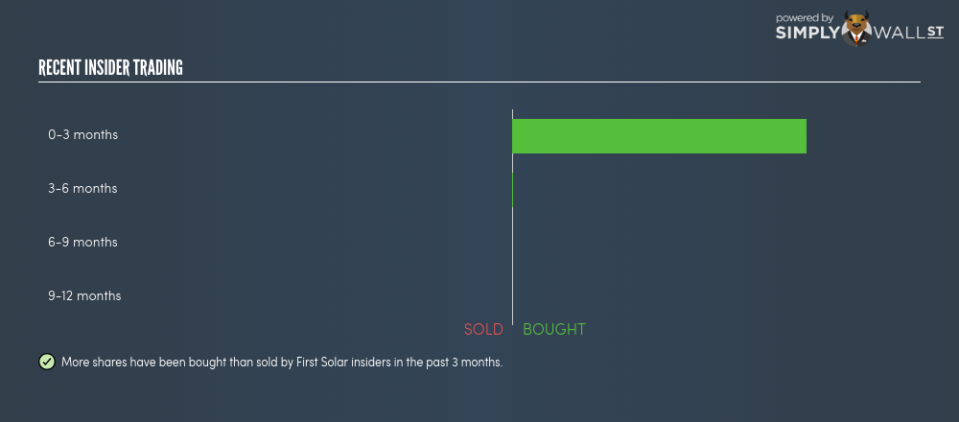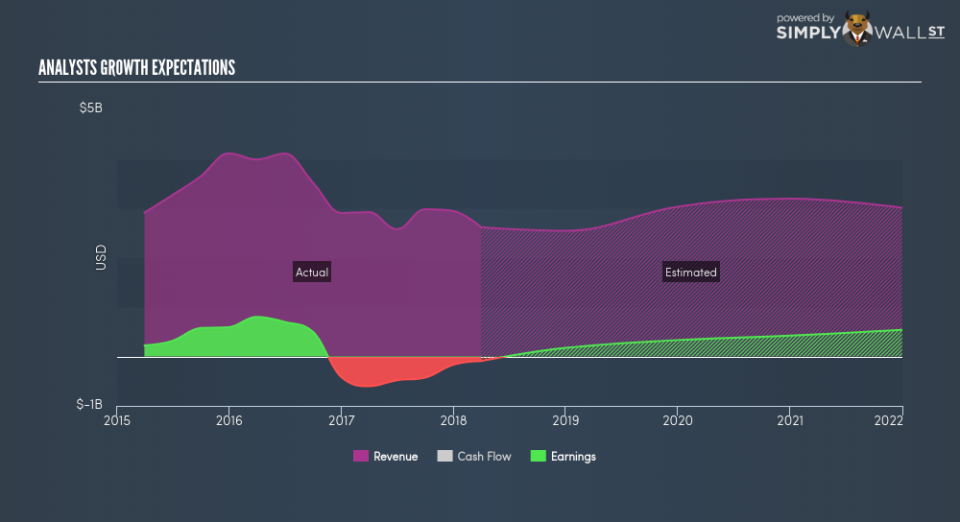Should You Buy First Solar Inc (NASDAQ:FSLR) When Insiders Do?

First Solar, Inc. provides photovoltaic solar energy solutions in the United States and internationally. First Solar’s insiders have invested 754.64k shares in the large-cap stocks within the past three months. Generally, insiders buying more shares in their own firm sends a bullish signal. A two-decade research published in The MIT Press (1998) showed that stocks following insider buying outperformed the market by 4.5%. However, these signals may not be enough to gain conviction on whether to invest. I’ve analysed two possible reasons driving the insiders’ decision to ramp up their investment of late. See our latest analysis for First Solar
Who Are Ramping Up Their Shares?
More shares have been bought than sold by First Solar insiders in the past three months. In total, individual insiders own over 29.69 million shares in the business, which makes up around 28.34% of total shares outstanding.
Does Buying Activity Reflect Future Growth?
Analysts’ expectations for revenue growth over the next 3 years of 20.35% provides a satisfactory outlook for the company which is consistent with the signal company insiders are sending with their net buying activity. Digging deeper into the line items, First Solar is expected to experience a rather subdued top-line growth over the next year, true Improved cost management and revenue growth initiatives could lead to higher earnings growth in the future. Insiders confident in the company’s potential to deliver continued growth could provide incentives to buy now.
Did Stock Price Volatility Instigate Buying?
Another factor we should consider is whether the timing of these insider transactions coincide with any significant share price movements. A correlation could mean directors are trading on market inefficiencies based on their belief of the company’s intrinsic value. Within the past three months, First Solar’s share price traded at a high of $77.95 and a low of $51.06. This suggests reasonably high share price volatility with a change of 52.66%. This movement could potentially be significant enough to warrant insiders to accrue their shares.
Next Steps:
First Solar’s insider meaningful buying activity tells us the shares are currently in favour, which is consistent with the significant expected earnings growth, and a fairly high volatility in share price over the same time period. Although insider buying can be a useful prompt, following the lead of an insider, however, will never replace diligent research. I’ve compiled two key aspects you should further examine:
Financial Health: Does First Solar have a healthy balance sheet? Take a look at our free balance sheet analysis with six simple checks on key factors like leverage and risk.
Other High Quality Alternatives : Are there other high quality stocks you could be holding instead of First Solar? Explore our interactive list of high quality stocks to get an idea of what else is out there you may be missing!
NB: Figures in this article are calculated using data from the last twelve months, which refer to the 12-month period ending on the last date of the month the financial statement is dated. This may not be consistent with full year annual report figures.
To help readers see pass the short term volatility of the financial market, we aim to bring you a long-term focused research analysis purely driven by fundamental data. Note that our analysis does not factor in the latest price sensitive company announcements.
The author is an independent contributor and at the time of publication had no position in the stocks mentioned.

 Yahoo Finance
Yahoo Finance 

